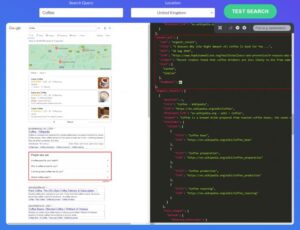In this Whiteboard Friday, Jon discusses how to identify, fix, and prevent cannibalization. He identifies three specific types of cannibalization: internal, international, and subdomain.
Click on the whiteboard image above to open a high resolution version in a new tab!
Video Transcription
Hey, Moz fans. How’s it going? My name is Jon Earnshaw. I’m the Chief Product Evangelist at Pi Datametrics, and today I’m going to be talking about a subject that is super close to my heart, and it’s been close to my heart for over 15 years. When I was analyzing the SERP one day and I started to discover this unusual flux, and what I was seeing was content that was doing really well on page 1 and suddenly it drops.
Then after a few weeks, we noticed that it wasn’t dropping for no reason. This content was dropping due to other content somehow conflicting. Now, we know there’s no such thing as a duplicate content penalty, and Google has always said that. But what we have understood since then is that Google and other search engines as well are becoming increasingly sensitive to content of a similar nature, and that’s what cannibalization is all about.
So today we’re going to take a look at how you identify it briefly because you can do that with tools. I’m going to show you how you fix it, and finally how you prevent it from happening in the first place, and if you get that bit right, you obviously don’t need to worry about one or two.
Step 1: Identify the type of cannibalization

So cannibalization, there are three types. Well, there are more, but there are three types that we kind of need to be aware of.
The first one is internal conflict or cannibalization. I’ll use those terms interchangeably. That’s where your content conflicts with itself. Then we have international conflict, and that’s a totally different kettle of fish, because that’s dealt with, for example, by hreflang. So we’ll keep that out of the mix.
Then we have subdomain conflict, and subdomain conflict is something that will always happen. For example, if you have a help subdomain, help.mysite.com, and you’ve got content on there that’s similar to the content on your main domain, that’s always going to conflict. But we’re not going to talk about that today. Really, we’re going to talk about internal conflict and how you fix it to start with.
Step 2: Fix cannibalization issues

So let’s imagine you wake up one day, you were on page 1 for “men’s blazers.” We all want to be on page 1 if we’re selling men’s blazers. Then suddenly you notice your content drops. Then when you take a closer look, you might discover that you have multiple URLs returning over a period of time for the same keyword. A point to note about cannibalization, it happens at keyword level.
It’s not content level. It’s all about the keyword. So one piece of content may not be in conflict for another term, for a derivative term, for example “men’s jackets” or “men’s summer jackets,” and that page may exist beautifully on page 1. But let’s imagine that you have one, two, three, four pages.
These could be men’s summer blazers, men’s winter blazers, men’s 2023 blazers, for example. The chances are if these pages are similar and if they contain the keyword that you’re trying to position for, i.e., “men’s blazers,” in the title, chances are you’re going to get conflict because we know that the HTML title is one of the strongest indicators to Google from a theming perspective.
URL, title, Header 1, meta description, content, all of that counts. But you’ll find when you make changes to the title, that can have a pretty instantaneous impact on visibility in less than 24 hours. So back to our situation of cannibalization. For URLs, what do we want to do? Well, we’ve got to make a decision.
Which one do we want to be the doorway into our ecosystem? Because if we don’t make a decision on which one is the doorway into our ecosystem, then Google is going to make that decision for us and we’re going to end up in a situation of cannibalization. Cannibalization, it could be in line. It could all be happening at the bottom of page 1. Sometimes people say, “Well, I’m on page 1, but I don’t really care.”
But you should care, because imagine your audience are searching for the men’s blazer and they find your piece of content and they love it, and they come back the next day and they Google it again, and they find it again, “Oh, it’s a different page.” They go into the site in a different area. Suddenly, I’m confused because we’ve got incoherent, uncoordinated, and haphazard doorways into our world.
So we need to make the decision and not leave that to the search engines. There are a number of things that we can do to actually fix this. But the first thing we need to do is check the position of the URLs for other terms, for derivative terms. Do these pieces of content position in their own right?
Before we start tampering, before we start playing with titles, before we start redirecting, before we do anything, do they position in their own right? Then we have choices to make. One possible choice, and I’ve seen a lot of clients do this, is to actually merge one of the older bits of content and put that in with the new content, and that works wonderfully because we’re not losing anything.
So we merge that, and then, of course, we 301 the original article. So we immediately get that injection of authority. Okay, downgrade the theme. How do you downgrade the theme? Remember the title, the strongest element on the page? We can actually change the title so it’s not about men’s blazers. We can say “men’s outfits for the summer,” if that’s appropriate.
Again, let’s not do that if that page positions in its own right because we don’t want to lose that traffic. We can also check the traffic to the page as well. Internally link. If we decide, for example, that A is the page that we want to be our doorway, let’s give it the authority that it needs to position.
Let’s link internally from B, C, and D to A using the anchor text “men’s blazers.” What are we doing? Well, we’re saying to Google this page over here is all about men’s blazers, and the anchor text and those links are going to give that page the authority that it needs.
So we do that in conjunction with some of these other options. We can also No Index if appropriate. So we have a number of tools in our arsenal. But just imagine that we love all of these pages and we don’t want to lose those because that’s summer blazers, winter blazers, linen blazers, and other blazers.
Another thing that you can do, if your CMS allows, is to actually build a hub page. Let’s call that hub page Men’s Blazers, and let’s link down from the new page, call that Page X, Men’s Blazers, to this one using the anchor text “summer blazers,” to this one, Winter, Linen, etc. Then crucially, we take the internal linking here and we link back from all of these to the hub page.
What have we created there? This wonderful hub and spoke structure within our site that your audience are going to make sense of and Google is going to make sense of it as well. So really it’s about sending signals to Google so that Google doesn’t get confused.
So this is down to us because the search engine is incredibly sensitive. So that’s how you can fix it, and you’ve got a number of choices.
Step 3: Prevent cannibalization
Finally, my favorite part, how do you prevent it? How do we not have to go through this and this? Well, the key to preventing it really is to employ one of the four pillars of contextual optimization.

Contextual optimization is all about optimizing in the context of the SERP, optimizing in the context of your competitors, optimizing in the context of Google’s algorithms, and optimizing in the context of your ecosystem. So what we mean here is about before I inject any new content on the subject of men’s blazers into my ecosystem, I’ve got to stop and think and ask the question, “Is there anything within my ecosystem that is potentially conflicting?”
That’s the first question you ask, because if there are other pieces of content in the ecosystem with “men’s blazers” in the title, chances are they’re going to conflict, and you may end up taking one page of page 1 of Google and your page never gets to page 1. So you may lose out all over. So a really simple way of analyzing your ecosystem is with a site operator.
So site:www.mysite.com intitle, and you bring in intitle, and we’re looking for, in inverted commas, “men’s blazers” because that’s going to return all the pages from your site, that Google has indexed, that have “men’s blazers” in the title.
Remember, the strongest theme. So we might find before we inject the new content, hey, I’ve got A, B, C, and D in my ecosystem. So we then go back here, and we make the decision. If this is a new piece of content, I can start to adopt and deploy one or more of these techniques to prevent it from happening in the first place.
Honestly, cannibalization of content is causing so much loss of visibility. I’d estimate somewhere around 40% of content that’s sitting on page 2 and 3 is down to this. Identify the conflicts. Once we’ve done that, we identify the complements. How do you identify the complements and why?
Well, I’ll tell you why. Because when you put a new piece of content into your ecosystem to go sit alongside these, it needs authority if it’s going to perform well, and the best and quickest way of authority is to get that from other pages on a related theme that talk about blazers or men’s style or men’s fashion. We do another site operator here, site:www.mysite.com.
Forget the intitle. Let’s look for “men’s blazers” in the body copy. We can do that, and we can find complements. Once you’ve found the complements, you want to create links using “men’s blazers” as the anchor text to your new piece of content. How do you find older pieces of content?
Inverted commas, “2019” or “2018.” Add that, you’ll suddenly start to find older content that you’ve totally forgotten about and, in addition to those links, that are going to inject authority. You can then add some redirects. Really, in a nutshell, that’s all there is to it, identifying, fixing, and preventing, and I guarantee these are all going to work for you.
Thanks for watching.
Video transcription by Speechpad.com


